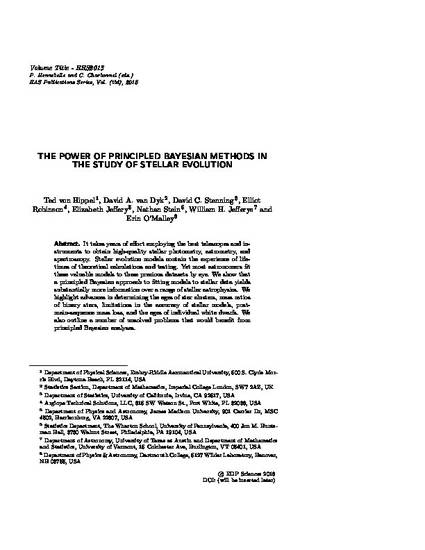
It takes years of effort employing the best telescopes and in- struments to obtain high-quality stellar photometry, astrometry, and spectroscopy. Stellar evolution models contain the experience of life- times of theoretical calculations and testing. Yet most astronomers fit these valuable models to these precious datasets by eye. We show that a principled Bayesian approach to fitting models to stellar data yields substantially more information over a range of stellar astrophysics. We highlight advances in determining the ages of star clusters, mass ratios of binary stars, limitations in the accuracy of stellar models, post-main-sequence mass loss, and the ages of individual white dwarfs. We also outline a number of unsolved problems that would benefit from principled Bayesian analyses.
Available at: http://works.bepress.com/ted-vonhippel/111/